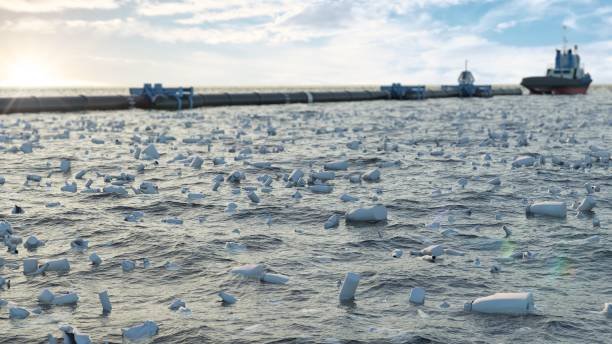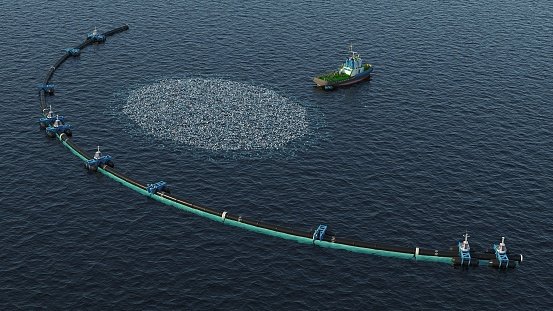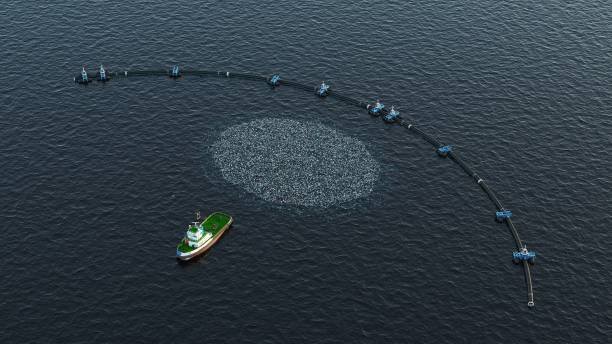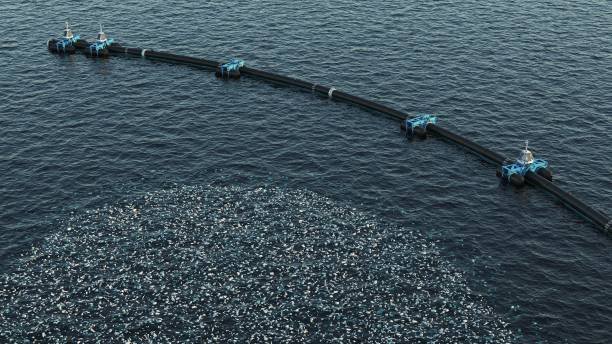Millions of tons of plastic waste, oil spills, and other dangerous items are poured into the ocean each year, harming ecosystems, human health, and marine life in ways that cannot be repaired. We must act now to solve this problem before it's too late since the cost of cleaning up this pollution is astronomical.

Part 1: The Cost of Cleaning up Marine Litter
Any solid human-made material that enters the maritime environment is referred to as marine litter, also known as marine debris. It consists of plastics, metals, glass, rubber, and other substances that endanger ecosystems and marine life. Marine biodiversity is seriously threatened by marine debris, which is present throughout the ocean, from the surface to the deepest parts.
The expense of removing marine debris is significant, and it necessitates the use of modern technology like drones and artificial intelligence in addition to traditional manual and mechanical methods. The price of manual cleanup is based on the size and quantity of trash that needs to be removed. It can cost a few thousand dollars to clean up tiny regions and millions of dollars to clean up huge ones.
Mechanical cleanup entails the removal of trash from the water's surface using specialized tools such skimmers, booms, and vacuum systems. The price of mechanical cleanup is determined by the kind and size of equipment utilized as well as the amount of trash that needs to be picked up. For instance, utilizing a skimmer to remove oil and debris from the water's surface can cost anywhere between $5,000 and $20,000 every day.
In order to aid with the cleanup effort, new technologies like drones and artificial intelligence are also being developed. Drones with cameras and sensors may locate and map regions with marine debris, and artificial intelligence systems can then evaluate the information to determine the best ways to clean it up. Although the cost of adopting these technologies is still expensive, it is anticipated to go down as they become more sophisticated and common.
Around the world, successful cleanup initiatives have been carried out. One such example is the Great Pacific Garbage Patch, where The Ocean Cleanup deployed a specialized system to collect plastic waste. The estimated $35 million cost of this cleanup endeavor pales in comparison to the long-term gains for the ecology and marine life.

Part 2: The Cost of Cleaning up Oil Spills
Oil spills are a serious environmental catastrophe that can have a catastrophic effect on ecosystems and marine life. Oil spill cleanup is expensive and needs a combination of controlled burning, chemical dispersants, and mechanical skimming.
Using sophisticated machinery, mechanical skimming removes oil from the water's surface. Depending on the size and scope of the spill, the cost of using this equipment can range from a few thousand to several hundred thousand dollars per day.
To break up the oil and spread it out into smaller droplets for easier cleanup, chemical dispersants are utilized. Depending on the kind and quantity of chemicals employed, chemical dispersants might cost a lot of money.
Another technique for removing oil spills is controlled burning. It involves lighting the oil on the water's surface on fire to burn it off and lessen its environmental impact. The price of employing this technique varies according to the amount of the spill and the tools utilized.
Major oil spill clean up can be quite expensive. For instance, it was anticipated that it would cost more than $60 billion to clean up the Deepwater Horizon oil disaster in the Gulf of Mexico in 2010. This included the price of the cleanup work, compensation for impacted people and businesses, and fines levied against the at-fault parties.

Part 3: The Cost of Addressing Ocean Acidification
Another significant threat to the health of our seas is ocean acidification. It describes the continual lowering of seawater's pH that is brought on by carbon dioxide (CO2) absorption from the atmosphere. The destruction of coral reefs and the disruption of food webs are only two examples of how this process is already having a substantial influence on marine life and ecosystems.
Combining efforts to cut carbon emissions, support renewable energy sources, and create innovative technologies like carbon capture and storage are necessary to address ocean acidification. Depending on the level of investment and the scope of the endeavor, the cost of these procedures varies greatly.
One of the most important stages in tackling ocean acidification is reducing carbon emissions. Moving away from fossil fuels and toward renewable energy sources like solar, wind, and hydropower is necessary to achieve this. Although this shift may be expensive, the long-term advantages in terms of lowering greenhouse gas emissions and preserving the quality of our seas much outweigh any short-term costs.
Reducing carbon emissions and addressing ocean acidification can both be accomplished by creating new technologies, such as carbon capture and storage. Capturing carbon dioxide from industrial processes and burying it below or beneath the seabed is known as carbon capture and storage. These technologies can be expensive to develop and put into use, but they have a lot of potential to cut emissions and lessen the effects of ocean acidification.

Part 4: The Cost of Preventing Future Ocean Pollution
The cost of cleaning up our oceans can be reduced significantly by preventing ocean pollution. Regulations, public awareness initiatives, and sustainable business practices in sectors like fishing and shipping are all necessary to achieve this.
One of the best methods to stop ocean pollution is through regulations. The quantity of pollution that industries can discharge into the ocean can be restricted by rules and regulations imposed by governments. As an illustration, the National Pollution Discharge Elimination System is regulated by the United States Environmental Protection Agency (EPA) (NPDES).
Campaigns to raise public awareness can be quite effective in stopping ocean pollution. By informing the public about the harm that pollution causes to ecosystems and marine life, we can motivate people to adopt lifestyle changes that lessen pollution. Campaigns to decrease plastic waste and support sustainable fishing methods, for instance, can significantly reduce ocean pollution.
Additionally, sustainable business practices in sectors like shipping and fishing can help stop ocean pollution. For instance, reducing bycatch and using less hazardous fishing equipment are two fishing techniques that can help to safeguard marine life. Pollution can be decreased in shipping by taking steps to reduce emissions, such as switching to cleaner fuels and rerouting traffic.
Several regions of the world have already implemented effective preventative measures. For instance, single-use plastics are prohibited in the European Union, and plastic bag bans have been enacted in numerous places worldwide. The amount of plastic waste that reaches the ocean has been significantly decreased because to these initiatives.
The cost of not taking action is far greater than the cost of cleaning up our oceans. Our planet's health depends on the condition of our seas, so we must act right away to safeguard it. We can guarantee an ocean that is healthy and thriving for future generations by making investments in cleanup initiatives, addressing ocean acidification, and preventing further pollution. To make this a reality, we must collaborate across sectors and geographic boundaries.
Posted Using LeoFinance Beta

